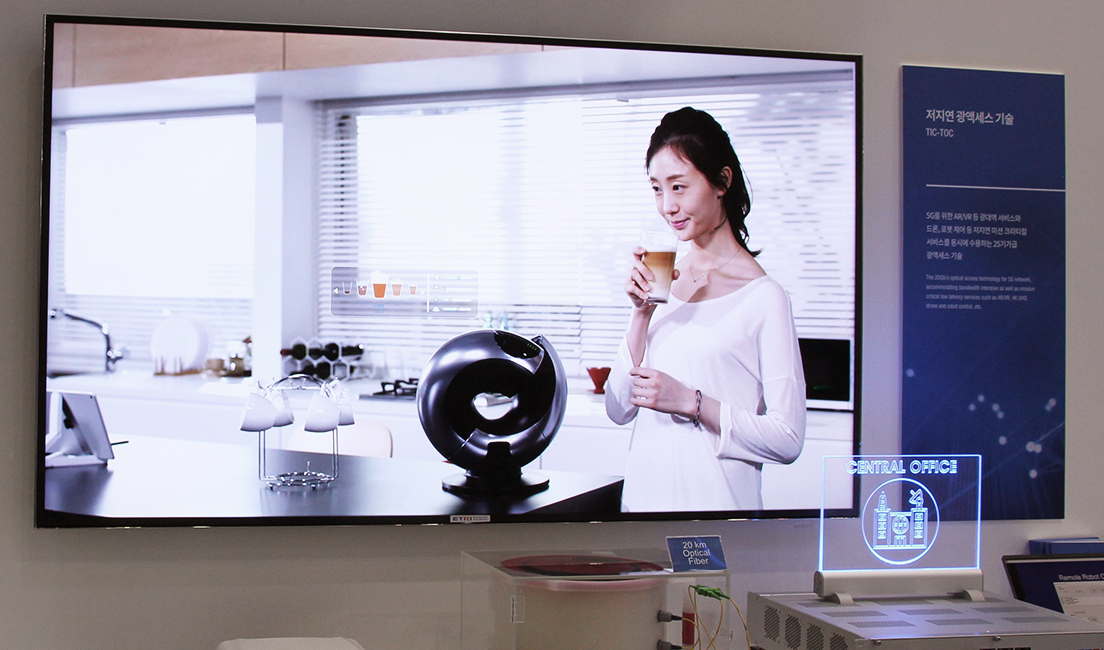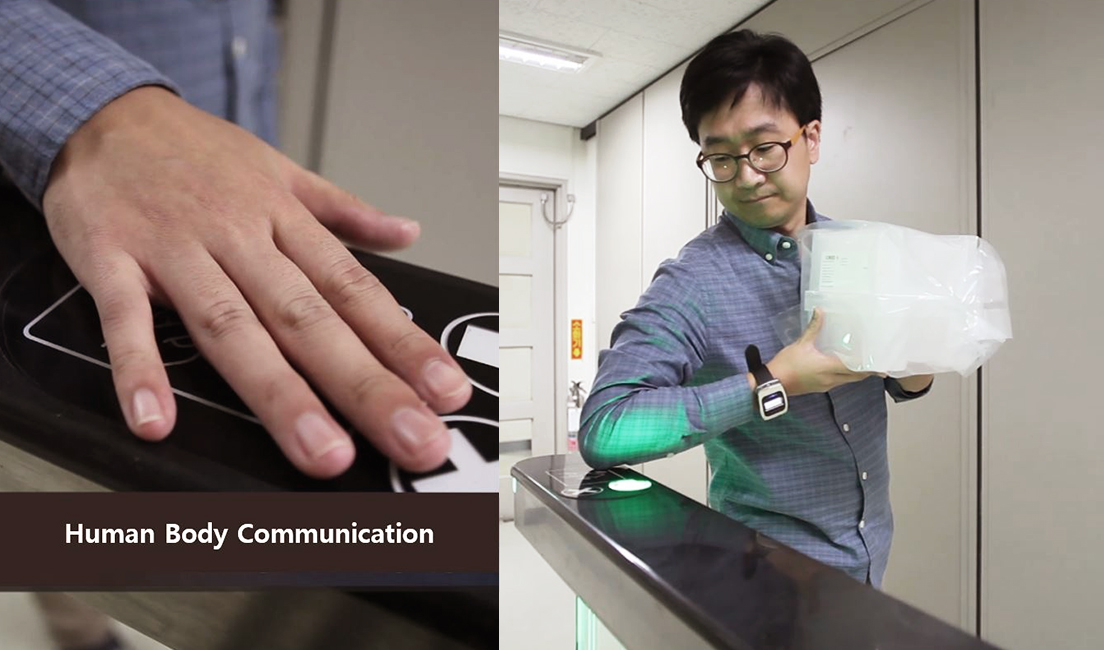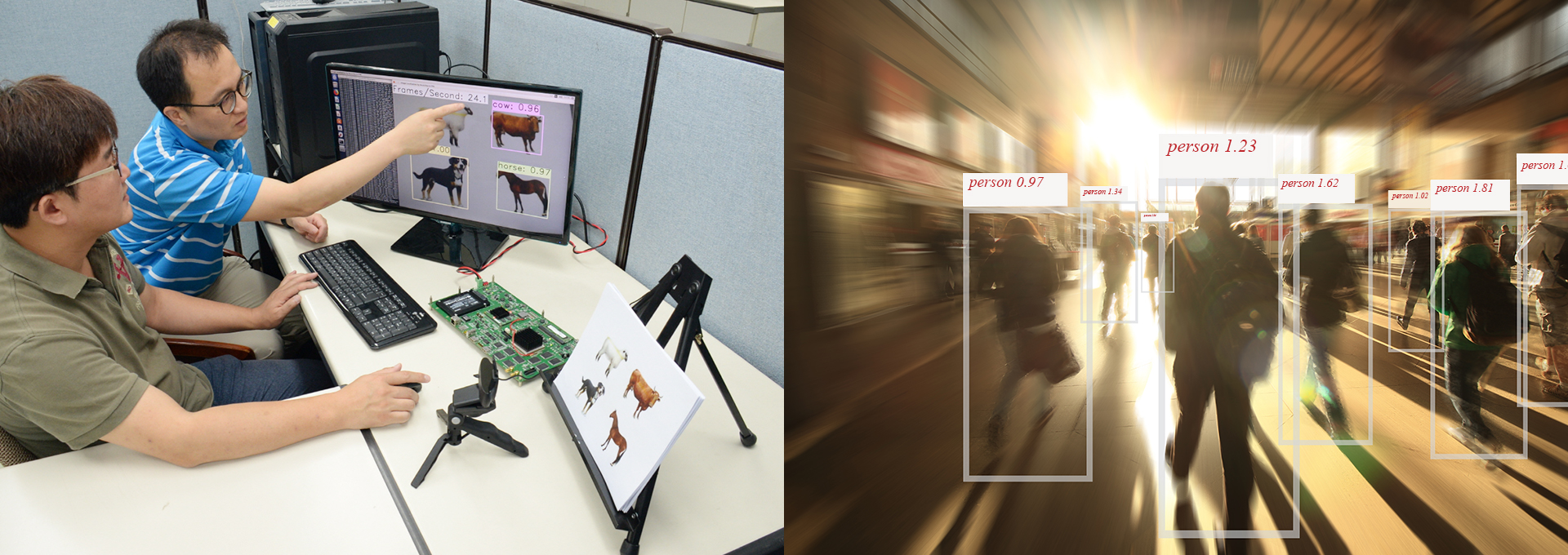01
Cloud Infrastructure Service Allowing Fast and Safe Data Storage



The first technology to be introduced by ETRI is a virtual infrastructure solution for high-speed cloud service. This technology helps enable a cloud infrastructure service, which provides a virtual desktop quickly and safely while allowing the storage of large-scale data whenever and wherever needed.
Based on their in-memory based virtualized infrastructure technology, ETRI researchers have actualized a high-speed virtual desktop service via the highly secure cloud infrastructure service, 12 times as fast as existing services. This virtualized infrastructure technology has also allowed high scalability of and data control over cloud-based integrated virtual storage. Furthermore, in an attempt to lead the way in establishing global standards associated with cloud service technology, ETRI contributed to the designation of Cloud Storage Integration Technology as the International Telecommunication Union Telecommunication Standardization Sector (ITU-T)’s international standard in June.
02
Optical Access Technology for
Ultra-Reality Service

The second technology is ultra-low latency optical access technology. In the future, we will live in a world where information can be transmitted in an instant, as if we could feel the transmission with our hands using a sense of touch, i.e., the era of the tactile internet. In general, it takes 1/10, 1/100, and 1/1000 seconds for ears, eyes, and skin, respectively, to distinguish sensory stimulations. This means that data must be transmitted within 1/1000 seconds to make haptic interaction with visual feedback.
In this regards, the ultra-low latency and high-capacity optical access is one of the key enabling technologies to deliver data quickly enough to be felt by hand when users are connected to mobile base station or WiFi in 5G networks. According to ETRI researchers, this technology provides ultra-low latency data transmission within 1/1000 seconds, equivalent to the time required for a sense of touch to distinguish given stimulations. It also bandwidth-intensive data transmission at speeds up to 100 Gbps. Various ultra-realistic broadband media services such as augmented reality (AR) and virtual reality (VR), as well as ultra-low latency services including drones and robot control, can be accommodated by these optical access networks, whenever and wherever users need them.
03
See Image as Human Eyes and
Understand It as Humans
The next technology is semiconductor technology for vision intelligence. It is a microchip technology allowing AI to recognize objects to the degree that humans do. This AI technology is capable of identifying and finding the location of any everyday object.
In this regard, the proposed microchip serves as the eyes of AI. The chip, as small as 5mm x 5mm, is capable of recognizing objects 33 times a second. This achievement has also significantly improved the computational efficiency. Its ultra-low power consumption design allows the device to serve as a human-level vision intelligence sensor, even in mobile device, with only a small amount of energy, up to 100 times smaller than existing software technology.
Its high-speed process and low-power operation have been enabled by a sparse-synapse operation method, in which neural network processing is conducted while excluding synapses with less dominant contributions. Also, input data is pretreated and those with less contribution are excluded before the operation, thereby enhancing the speed of operation.
04
Blocking Harmful Media from Various Media Sources

The next technology is harmful media detection technology. The technology is used to prevent the harmful effects of media contents by analyzing and refining the correlation between various media sources and the corresponding information that they provide, as well as investigating the characteristics of media users. By doing so, the technology aims to prevent media and relevant knowledge from reckless distribution, use, and spread.
The technology is mainly characterized by the following sub-technologies: technology for deep-learning based analysis of harmful media contents, deep-learning based analytical engine technology using multi-modal data (images and voices), technology for analyzing media sources and their media information, and technology for creating correlation-based Internet of Media (IoM).
05
Signal transmission technology
for various information

The last technology to be introduced is Human Body Communication technology. This technology is a signal transmission technology that transmits various information, such as personal authentication, payment information, and sensor measurement information, to medium, the human body peripherals.
The technology is capable of allowing an intuitive service via Touch-and-Play (TAP) method, i.e., providing relevant information at the touch of a finger.
The application of Frequency Selective Digital Transmission (FSDT) technology, which directly transmits digital signals through a high-performance communications method with low power consumption and high transmission speed, has made its communications modules more compact. Also, the technology supports touch-based multi-access using multiple terminals and provides a complete security solution to prevent the risk of wireless hacking. Furthermore, it is designed to comply with IEEE International Standards.









